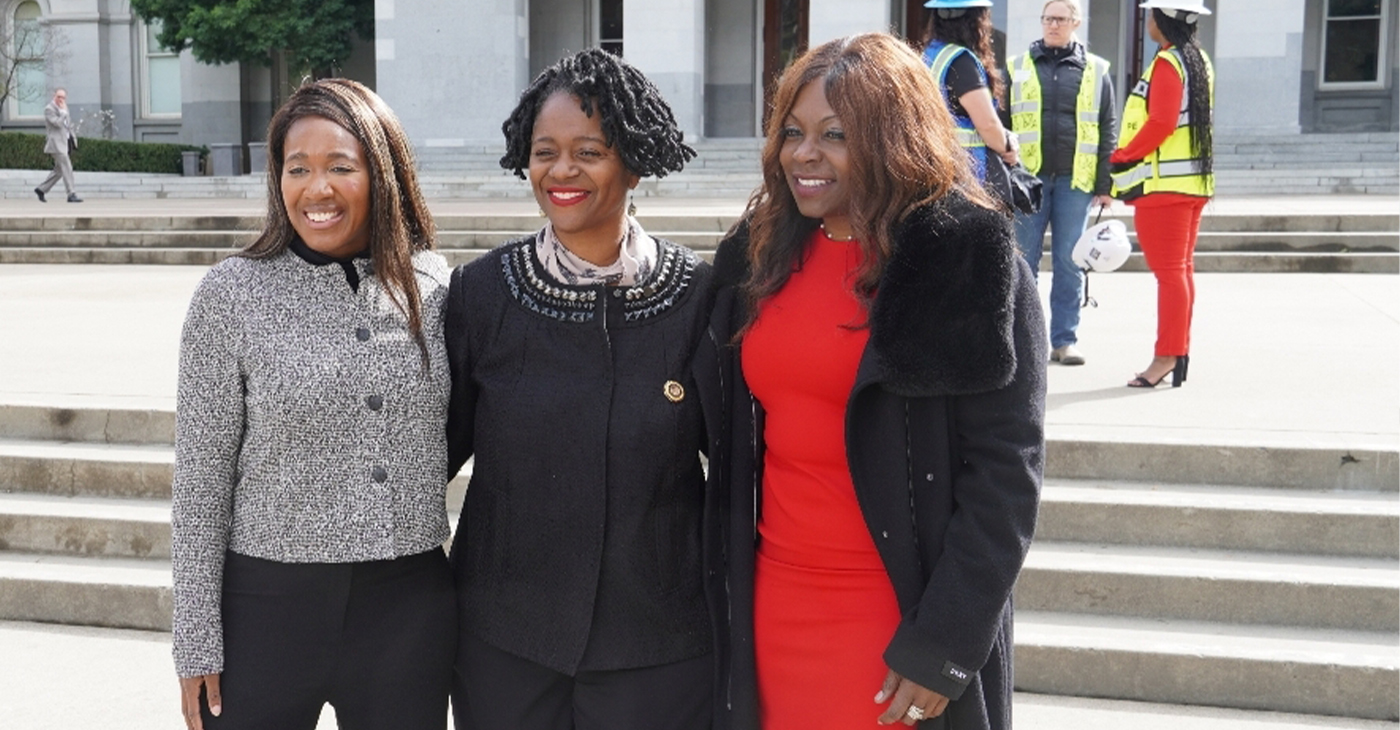Politics
What Issues Roil Washington? Obama’s Veto Threats are Clues

In this Jan. 22, 2015, photo, President Barack Obama speaks during a visit to the University of Kansas in Lawrence, Kansas. The veto threats that he’s issued over the last three weeks are a microcosm of American politics, representing the roiling issues of the day, the power struggle playing out between Congress and the White House, and even the pique between the president and GOP congressional leaders. Obama, who vetoed just two minor bills over the past six years, has been tossing out veto threats like confetti since Republicans took full control of Congress. (AP Photo/Charlie Riedel)
NANCY BENAC, Associated Press
WASHINGTON (AP) — President Barack Obama has a telling hit list.
The veto threats that he’s issued over the last three weeks are a microcosm of American politics, representing the roiling issues of the day, the power struggle playing out between Congress and the White House, and even the pique between the president and GOP congressional leaders.
Obama, who vetoed just two minor bills over the past six years, has been tossing out veto threats like confetti since Republicans took full control of Congress.
In addition to delivering eight formal veto notices on specific bills under consideration, the president has sounded broader warnings that he’ll block legislative efforts that jeopardize his health care law, roll back rules governing Wall Street, reverse his immigration actions or impose new sanctions on Iran.
There’s a little bit of everything in Obama’s veto threats: the culture wars (abortion), energy policy (Keystone XL oil pipeline), social matters (Obamacare), foreign policy (Iran), economic angst (financial regulation), even wonky details of governance (rule-making processes).
The list lays bare two competing visions of the proper role of government.
And while there’s plenty of political strategy behind what Obama has chosen to single out for a potential veto, he’s also “really expressing what his values are and what he believes in,” says James Thurber, director of the Center for Congressional and Presidential Studies at American University. Likewise, Thurber says, for all the political positioning going on among congressional Republicans, they’ve advanced any number of bills in the face of certain veto because they believe in them.
“It’s not just a chess game,” says Thurber.
Game or not, the odds of winning are in Obama’s favor. Presidents have prevailed on 96 percent of their more than 2,500 vetoes over the years, with Congress able to muster the votes to override the presidents’ objections just 4 percent of the time.
Of all the legislation subject to an Obama veto threat, a bipartisan effort to impose new sanctions on Iran to discourage its nuclear program may have the best chance of mustering the two-thirds vote needed to override a presidential veto. A vote on that could come as early as next month.
Many of the other bills don’t stand a chance. And Republicans know that going in.
Still, it’s smart for Republicans to put forward their ideas to show a clear contrast with the president, says Dan Holler, communications director for the conservative Heritage Action for America. Holler said it’s also important to understand that any major legislation that has a chance of being enacted is going to be negotiated with the White House behind the scenes.
“By necessity that will be quiet,” says Holler, “because pretty much every single member of the Republican Party ran against Obama and everything he’s done over the past six years. Their constituents would understandably be upset if they are working hand in glove with the administration.”
Both sides appear to be “frontloading” their agendas with confrontational matters to help set the stage for the 2016 elections, with the real work to find compromises to come later, says William Galston, a former Clinton administration official.
“The question, then, is what does Phase 2 look like?” says Galston. After Obama vetoes GOP proposals and the Republicans fail to override him, “that’s when the 2015 game begins.”
Obama might want to pay more attention to timing if he wants to improve his working relations with congressional leaders.
His first two veto threats were issued while the new Congress still was being sworn in, prompting plenty of grousing from Republicans.
“He could have waited a few hours,” said House Speaker John Boehner. “Maybe he could have waited a few days. We were taking our oath of office when they were issuing veto threats. Come on.”
___
Obama’s veto notices: http://www.whitehouse.gov/omb/114/legislative_sap_date_2015
History of presidential vetoes: http://www.senate.gov/reference/Legislation/Vetoes/vetoCounts.htm
___
Follow Nancy Benac at http://twitter.com/nbenac.
Copyright 2015 The Associated Press. All rights reserved. This material may not be published, broadcast, rewritten or redistributed.
Activism
Oakland Post: Week of March 28 – April 1, 2025
The printed Weekly Edition of the Oakland Post: Week of March 28 – April 1, 2025

To enlarge your view of this issue, use the slider, magnifying glass icon or full page icon in the lower right corner of the browser window.
Activism
Sen. Lola Smallwood-Cuevas Honors California Women in Construction with State Proclamation, Policy Ideas
“Women play an important role in building our communities, yet they remain vastly underrepresented in the construction industry,” Smallwood-Cuevas stated. “This resolution not only recognizes their incredible contributions but also the need to break barriers — like gender discrimination.

By Antonio Ray Harvey, California Black Media
To honor Women in Construction Week, Sen. Lola Smallwood-Cuevas (D-Los Angeles), a member of the California Legislative Black Caucus (CLBC), introduced Senate Concurrent Resolution (SCR) 30 in the State Legislature on March 6. This resolution pays tribute to women and highlights their contributions to the building industry.
The measure designates March 2, 2025, to March 8, 2025, as Women in Construction Week in California. It passed 34-0 on the Senate floor.
“Women play an important role in building our communities, yet they remain vastly underrepresented in the construction industry,” Smallwood-Cuevas stated. “This resolution not only recognizes their incredible contributions but also the need to break barriers — like gender discrimination.
Authored by Assemblymember Liz Ortega (D-San Leandro), another bill, Assembly Concurrent Resolution (ACR) 28, also recognized women in the construction industry.
The resolution advanced out of the Assembly Committee on Rules with a 10-0 vote.
The weeklong event coincides with the National Association of Women In Construction (NAWIC) celebration that started in 1998 and has grown and expanded every year since.
The same week in front of the State Capitol, Smallwood, Lt. Gov. Eleni Kounalakis, Assemblymember Josh Hoover (R-Folsom), and Assemblymember Maggie Krell (D-Sacramento), attended a brunch organized by a local chapter of NAWIC.
Two of the guest speakers were Dr. Giovanna Brasfield, CEO of Los Angeles-based Brasfield and Associates, and Jennifer Todd, President and Founder of LMS General Contractors.
Todd is the youngest Black woman to receive a California’s Contractors State License Board (A) General Engineering license. An advocate for women of different backgrounds, Todd she said she has been a woman in construction for the last 16 years despite going through some trying times.
A graduate of Arizona State University’s’ Sandra Day O’Connor College of Law, in 2009 Todd created an apprenticeship training program, A Greener Tomorrow, designed toward the advancement of unemployed and underemployed people of color.
“I always say, ‘I love an industry that doesn’t love me back,’” Todd said. “Being young, female and minority, I am often in spaces where people don’t look like me, they don’t reflect my values, they don’t reflect my experiences, and I so persevere in spite of it all.”
According to the U.S. Bureau of Labor Statistics, only 11.2% of the construction workforce across the country are female. Overall, 87.3% of the female construction workers are White, 35.1% are Latinas, 2.1% are Asians, and 6.5% are Black women, the report reveals.
The National Association of Home Builders reported that as of 2022, the states with the largest number of women working in construction were Texas (137,000), California (135,000) and Florida (119,000). The three states alone represent 30% of all women employed in the industry.
Sen. Susan Rubio (D-Baldwin Park) and the California Legislative Women’s Caucus supported Smallwood-Cuevas’ SCR 30 and requested that more energy be poured into bringing awareness to the severe gender gap in the construction field.
“The construction trade are a proven path to a solid career. and we have an ongoing shortage, and this is a time for us to do better breaking down the barriers to help the people get into this sector,” Rubio said.
Bay Area
Five Years After COVID-19 Began, a Struggling Child Care Workforce Faces New Threats
Five years ago, as COVID-19 lockdowns and school closures began, most early educators continued to work in person, risking their own health and that of their families. “Early educators were called essential, but they weren’t provided with the personal protective equipment they needed to stay safe,” said CSCCE Executive Director Lea Austin. “There were no special shopping hours or ways for them to access safety materials in those early and scary months of the pandemic, leaving them to compete with other shoppers. One state even advised them to wear trash bags if they couldn’t find PPE.”

UC Berkeley News
In the first eight months of the COVID-19 pandemic alone, 166,000 childcare jobs were lost across the nation. Significant recovery didn’t begin until the advent of American Rescue Plan Act (ARPA) Child Care Stabilization funds in April 2021.
Today, child care employment is back to slightly above pre-pandemic levels, but job growth has remained sluggish at 1.4% since ARPA funding allocations ended in October 2023, according to analysis by the Center for the Study of Child Care Employment (CSCCE) at UC Berkeley. In the last six months, childcare employment has hovered around 1.1 million.
Yet more than two million American parents report job changes due to problems accessing child care. Why does the childcare sector continue to face a workforce crisis that has predated the pandemic? Inadequate compensation drives high turnover rates and workforce shortages that predate the pandemic. Early childhood educators are skilled professionals; many have more than 15 years of experience and a college degree, but their compensation does not reflect their expertise. The national median hourly wage is $13.07, and only a small proportion of early educators receive benefits.
And now a new round of challenges is about to hit childcare. The low wages paid in early care and education result in 43% of early educator families depending on at least one public support program, such as Medicaid or food stamps, both of which are threatened by potential federal funding cuts. Job numbers will likely fall as many early childhood educators need to find jobs with healthcare benefits or better pay.
In addition, one in five child care workers are immigrants, and executive orders driving deportation and ICE raids will further devastate the entire early care and education system. These stresses are part of the historical lack of respect the workforce faces, despite all they contribute to children, families, and the economy.
Five years ago, as COVID-19 lockdowns and school closures began, most early educators continued to work in person, risking their own health and that of their families. “Early educators were called essential, but they weren’t provided with the personal protective equipment they needed to stay safe,” said CSCCE Executive Director Lea Austin. “There were no special shopping hours or ways for them to access safety materials in those early and scary months of the pandemic, leaving them to compete with other shoppers. One state even advised them to wear trash bags if they couldn’t find PPE.”
The economic impact was equally dire. Even as many providers tried to remain open to ensure their financial security, the combination of higher costs to meet safety protocols and lower revenue from fewer children enrolled led to job losses, increased debt, and program closures.
Eventually, the federal government responded with historic short-term investments through ARPA, which stabilized childcare programs. These funds provided money to increase pay or provide financial relief to early educators to improve their income and well-being. The childcare sector began to slowly recover. Larger job gains were made in 2022 and 2023, and as of November 2023, national job numbers had slightly surpassed pre-pandemic levels, though state and metro areas continued to fluctuate.
Many states have continued to support the workforce after ARPA funding expired in late 2024. In Maine, a salary supplement initiative has provided monthly stipends of $240-$540 to educators working in licensed home- or center-based care, based on education and experience, making it one of the nation’s leaders in its support of early educators. Early educators say the program has enabled them to raise wages, which has improved staff retention. Yet now, Governor Janet Mills is considering cutting the stipend program in half.
“History shows that once an emergency is perceived to have passed, public funding that supports the early care and education workforce is pulled,” says Austin. “You can’t build a stable childcare workforce and system without consistent public investment and respect for all that early educators contribute.”
The Center for the Study of Childcare Employment is the source of this story.
-

 #NNPA BlackPress4 weeks ago
#NNPA BlackPress4 weeks agoTarget Takes a Hit: $12.4 Billion Wiped Out as Boycotts Grow
-

 Activism4 weeks ago
Activism4 weeks agoUndocumented Workers Are Struggling to Feed Themselves. Slashed Budgets and New Immigration Policies Bring Fresh Challenges
-

 #NNPA BlackPress4 weeks ago
#NNPA BlackPress4 weeks agoBREAKING Groundbreaking Singer Angie Stone Dies in Car Accident at 63
-

 Activism4 weeks ago
Activism4 weeks agoOakland Post: Week of February 26 – March 4, 2025
-

 #NNPA BlackPress4 weeks ago
#NNPA BlackPress4 weeks agoNAACP Legend and Freedom Fighter Hazel Dukes Passes
-

 Arts and Culture4 weeks ago
Arts and Culture4 weeks agoBeverly Lorraine Greene: A Pioneering Architect and Symbol of Possibility and Progress
-

 #NNPA BlackPress4 weeks ago
#NNPA BlackPress4 weeks agoTrump Kicks the Ukrainian President Out of the White House
-

 #NNPA BlackPress4 weeks ago
#NNPA BlackPress4 weeks agoApple Shareholders Reject Effort to Dismantle DEI Initiatives, Approve $500 Billion U.S. Investment Plan





















































